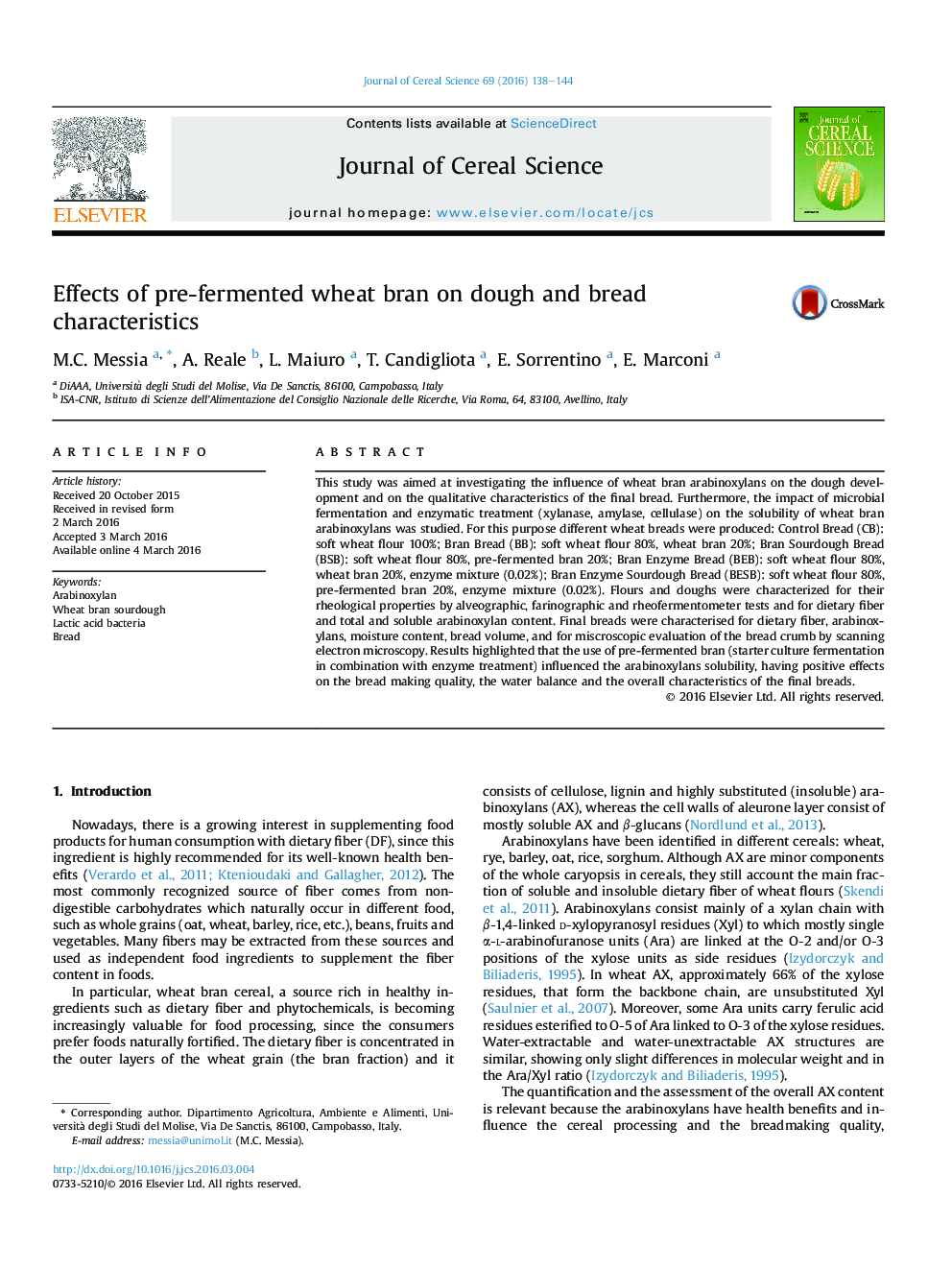| Article ID | Journal | Published Year | Pages | File Type |
|---|---|---|---|---|
| 4515575 | Journal of Cereal Science | 2016 | 7 Pages |
•Lactic acid fermentation of bran enhance the arabinoxylans solubility in the dough.•Use of pre-fermented bran improves rheological characteristics of dough and the quality of bread.•Breads by pre-fermented bran have the highest moisture retention and the better shelf-life.
This study was aimed at investigating the influence of wheat bran arabinoxylans on the dough development and on the qualitative characteristics of the final bread. Furthermore, the impact of microbial fermentation and enzymatic treatment (xylanase, amylase, cellulase) on the solubility of wheat bran arabinoxylans was studied. For this purpose different wheat breads were produced: Control Bread (CB): soft wheat flour 100%; Bran Bread (BB): soft wheat flour 80%, wheat bran 20%; Bran Sourdough Bread (BSB): soft wheat flour 80%, pre-fermented bran 20%; Bran Enzyme Bread (BEB): soft wheat flour 80%, wheat bran 20%, enzyme mixture (0.02%); Bran Enzyme Sourdough Bread (BESB): soft wheat flour 80%, pre-fermented bran 20%, enzyme mixture (0.02%). Flours and doughs were characterized for their rheological properties by alveographic, farinographic and rheofermentometer tests and for dietary fiber and total and soluble arabinoxylan content. Final breads were characterised for dietary fiber, arabinoxylans, moisture content, bread volume, and for miscroscopic evaluation of the bread crumb by scanning electron microscopy. Results highlighted that the use of pre-fermented bran (starter culture fermentation in combination with enzyme treatment) influenced the arabinoxylans solubility, having positive effects on the bread making quality, the water balance and the overall characteristics of the final breads.
